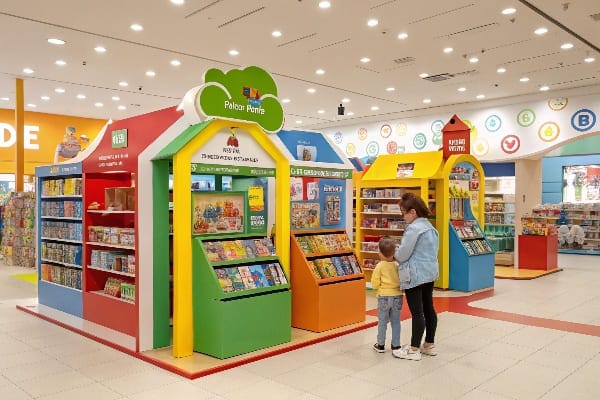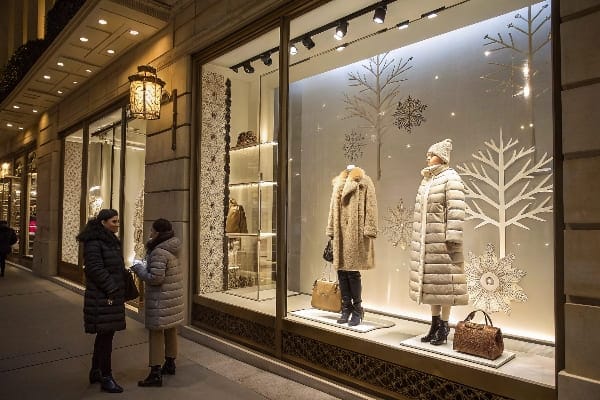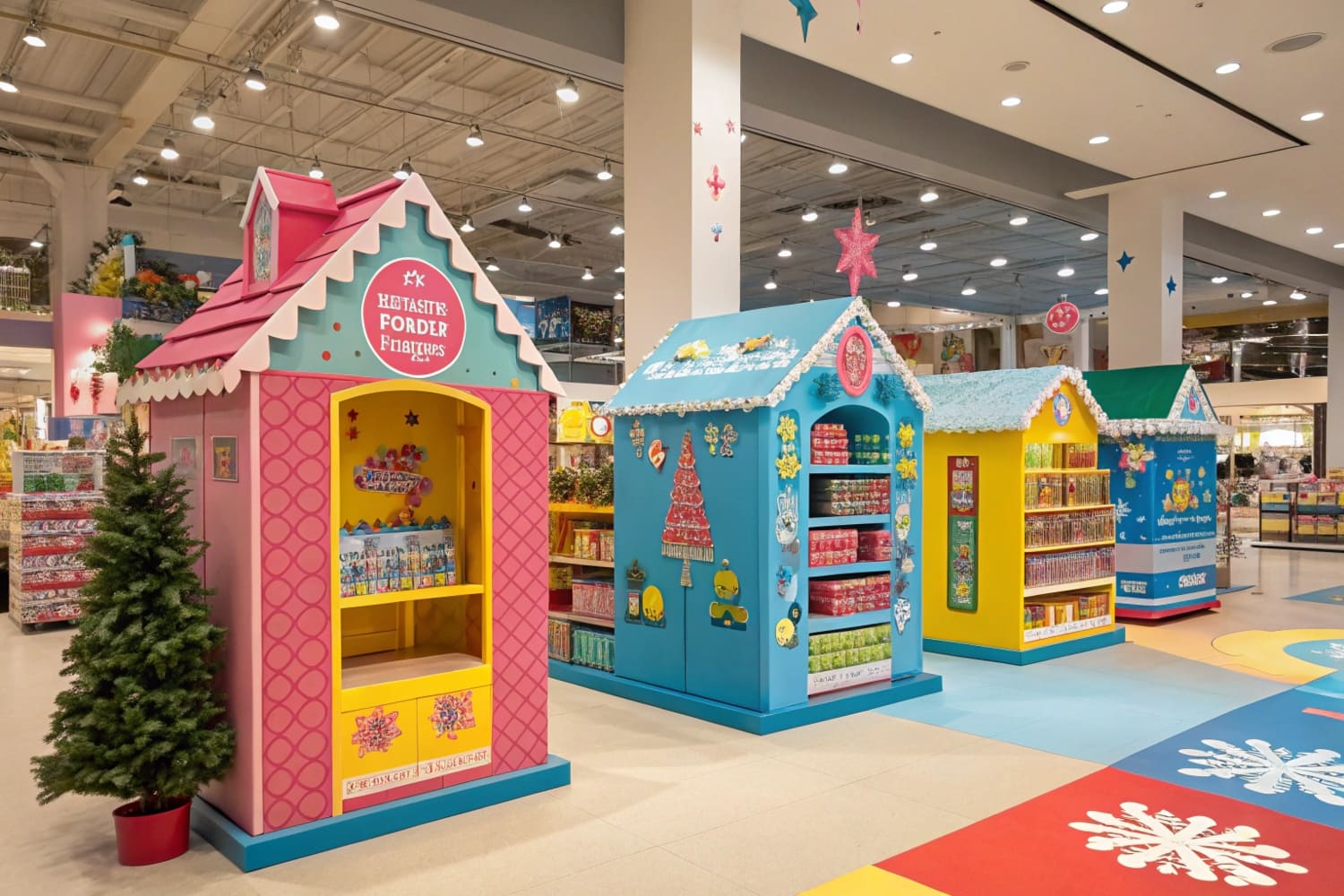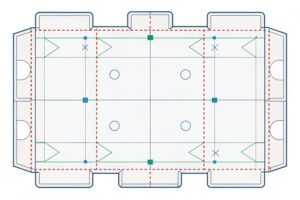Les présentoirs perdent rapidement leur impact. Les clients les ignorent. J'ai besoin d'un rythme clair qui maintienne l'intérêt et les coûts au plus bas. J'utilise un cycle que les équipes peuvent suivre.
Changez les présentoirs toutes les 4 à 8 semaines. Rafraîchissez les petits éléments chaque semaine. Changez les vitrines mensuellement ou par saison. Remplacez les présentoirs promotionnels en fin de campagne ou lorsque les ventes stagnent. Utilisez les tests et les coûts pour affiner la cadence par magasin.

Je détaillerai les cadences les plus courantes, leur efficacité et comment les mettre en œuvre efficacement. Je partagerai également des enseignements tirés d'installations en usine et en magasin.
À quelle fréquence les écrans de fenêtre sont-ils modifiés?
Une vitrine est un vendeur silencieux. Une vitrine obsolète nuit à la fréquentation. Je planifie un échange régulier qui suit les saisons, les campagnes et les événements locaux. J'établis un calendrier simple et répétable.
La plupart des détaillants changent leurs vitrines toutes les 4 à 6 semaines, avec des rafraîchissements rapides chaque semaine. Les vitrines phares saisonnières changent tous les trimestres. Les vitrines phares à fort trafic peuvent être modifiées toutes les 2 à 3 semaines pour s'adapter aux campagnes, aux lancements de produits ou aux événements locaux.

Choisissez une cadence adaptée à votre magasin
Le timing des vitrines dépend de la fréquentation, de la saisonnalité et de la capacité de l'équipe. Les vitrines des épiceries vibrent avec les offres hebdomadaires. Les vitrines de mode suivent les collections. Les boutiques spécialisées profitent des lancements. J'établis d'abord un calendrier sur 12 mois. Je fixe les ancres saisonnières . Je comble les vides avec des campagnes courtes.
| Type de vente au détail | Cadence de fenêtre typique | Notes |
|---|---|---|
| Mode/Vêtements | 4 à 6 semaines | Lien avec les chutes, la courbe de taille et les looks clés. Ajoutez des changements d'accessoires rapides chaque semaine. |
| Beauté/Soins personnels | 4 à 8 semaines | Alignez-vous sur les références et coffrets cadeaux Hero. Surveillez les stocks des testeurs. |
| Électronique | 6 à 8 semaines | Lancements et précommandes sont au programme. Tenez vos fiches techniques à jour. |
| Épicerie/Pharmacie | 2 à 4 semaines | Les promotions hebdomadaires stimulent les encarts. Affichez clairement les prix et en grand. |
| Plein air/Sport | 4 à 6 semaines | Suivez les saisons de chasse/pêche et les événements locaux. |
Utilisez des déclencheurs clairs, pas de conjectures
Je change une vitrine à l'avance si la circulation baisse, si les ventes ralentissent ou si les accessoires semblent fatigués. Je surveille la météo, les jours fériés et les dates de livraison. Je garde des visuels de secours en magasin pour des remplacements rapides. Je prévois des kits en kit qu'un seul employé peut installer en moins de 45 minutes.
Contrôler les coûts et les déchets
Je privilégie les accessoires en carton ondulé et en carton. Ils s'impriment rapidement et sont livrés à plat. Ils sont faciles à recycler. J'utilise l'impression numérique pour les petits tirages et je réutilise le matériel. J'évite les plastiques lourds, sauf pour des raisons de sécurité. Je conçois des modules qui changent de magasin pour prolonger leur durée de vie.
Pourquoi est-il important de maintenir les écrans?
Une belle présentation est vouée à l'échec si elle paraît négligée. La poussière, les déchirures et les crochets vides minent la confiance. Je considère l'entretien comme une habitude commerciale, pas comme une corvée. Je le planifie.
Un bon entretien protège les ventes, la marque et la sécurité. Des présentoirs propres, bien approvisionnés et alignés améliorent la conversion, réduisent les retours, préviennent les dommages et prolongent la durée de vie des présentoirs. De petites réparations quotidiennes valent mieux que des réinitialisations complètes coûteuses.

Que se passe-t-il si je l'ignore ?
J'ai vu des programmes performants s'essouffler faute d'entretien. Un lancement en extérieur semblait audacieux dès le premier jour. Deux semaines plus tard, les bords s'effilochaient et les bandes de couleur s'estompaient sous une lumière crue. Le taux de conversion a chuté. Nous avons corrigé le problème avec un pelliculage mat, des protections de bord et un programme d'essuyage quotidien. Les ventes ont repris. La leçon est simple : l'entretien fait partie intégrante de l'offre.
| Problème | Coût si ignoré | Solution simple |
|---|---|---|
| Poussière et éraflures | Moins de confiance, moins de contacts | Lingette quotidienne en microfibre ; revêtements mats sur les surfaces à contact élevé |
| Visages vides | Pertes de ventes, mauvaises prévisions | Plan de stock arrière ; règle « un entrant, un sortant » |
| Graphiques tordus | Dommage pour la marque, acheteurs confus | Doublures sans bulles ; raclette et languettes d'angle |
| Structure faible | Risque de sécurité, stock cassé | Essais de charge ; cannelure en E plus épaisse ou double paroi selon les besoins |
| Dérive des couleurs | Retours et réclamations | Cibles couleur ; épreuve numérique ; même presse pour les réimpressions |
| Bords déchirés | Durée de vie de l'écran plus courte | Bords enveloppants; rayon découpé; plis renforcés |
Créez une routine quotidienne légère
Je tiens une liste de contrôle de cinq minutes à l'ouverture et à la fermeture : redresser les en-têtes, préparer les produits, vider les poubelles, vérifier les étiquettes de prix et réapprovisionner les meilleures ventes. Je forme un propriétaire par poste. J'ajoute un passage hebdomadaire plus approfondi pour les vis, les clips et les pièces mobiles. Je consigne les problèmes avec des photos pour que nous puissions identifier les tendances.
Concevoir pour une longue durée de vie dès le premier jour
Dans mon usine, je réalise de charge et de transport sur chaque nouvelle unité de production. J'utilise des encres à base d'eau et des revêtements résistants. Je choisis des qualités de carton ondulé qui correspondent au poids de l'unité de gestion des stocks, sans approximation. J'identifie chaque kit avec un plan d'assemblage simple. J'imprime des codes QR qui renvoient vers une vidéo de montage de 60 secondes. Les équipes travaillent plus vite et commettent moins d'erreurs.
Comment s'appelle-t-il lorsque vous configurez des écrans dans les magasins?
De nombreuses équipes utilisent des termes différents pour une même tâche, ce qui engendre confusion et retards. Je privilégie un langage simple et cohérent entre les briefs et les bons de commande.
Nous appelons cette mise en place « merchandising visuel ». Le travail en magasin consiste en une « exécution commerciale » ou une « refonte du merchandising ». Suivre le plan de rayonnage est une « mise en œuvre du planogramme ». Le processus complet est « l'installation des présentoirs ».

Parler la même langue
Des conditions claires permettent de gagner du temps et de l'argent. Voici comment je définis les conditions courantes avec les acheteurs, les équipes terrain et notre usine. Je les inclue sur la première page de chaque brief pour éviter les erreurs de lecture et les retouches.
| Terme | Signification | Qui l'utilise |
|---|---|---|
| Marchandisage visuel3 | La stratégie et la conception de l'apparence des produits en magasin | Marketing, VM, Design |
| Planogramme (POG) | Un plan des étagères qui montre le placement exact des produits | Catégorie, Acheteurs, Opérations en magasin |
| Exécution de la vente au détail4 | L'acte d'installation et d'audit en magasin | Équipes de terrain, courtiers |
| Réinitialisation du merchandising | Un changement programmé de l'agencement ou des équipements | Opérations de magasin, fournisseurs |
| Installation d'affichage | Construction et pose de PLV/PDQ/stands de sol | Personnel du magasin, vendeurs |
| Ensemble de luminaires | Le matériel, les étagères et les supports | Planification de magasin, fournisseurs |
Suivez un flux d'installation simple
J'expédie des kits en carton ondulé en kit, accompagnés d'une carte imprimée, d'une vidéo QR code et de sacs étiquetés. Je fais correspondre les codes-barres de l'écran aux références. J'applique du ruban adhésif double-face au préalable et j'ajoute des pieds et des clips de rechange. Je conçois la fabrication par une seule personne autant que possible. La plupart des unités prennent entre 15 et 30 minutes, ce qui permet de gagner du temps et de réduire les dommages.
L'usine de cravates travaille pour stocker la réalité
Mon équipe à Shenzhen gère trois lignes. Nous imprimons, montons, découpons, testons et emballons en un seul flux. Nous réalisons des échantillons rapidement et les peaufinons jusqu'à l'épreuve. Nous utilisons l'impression numérique pour les petits tirages et les créations saisonnières. Nous passons à la flexographie ou à l'offset pour les grands tirages afin de réduire les coûts unitaires. Nous marquons tous les cartons avec les numéros de magasin et les dates de vague. Les équipes des magasins reçoivent ce qu'elles attendent, dans les délais et dans l'ordre.
Les écrans de fenêtre augmentent-ils les ventes?
Oui. Une bonne vitrine attire le regard et les pas. Une vitrine défectueuse gaspille du loyer. Je considère la vitrine comme une campagne. Elle doit être connectée au stock et offrir un accès facile à l'intérieur.
Des vitrines performantes augmentent la fréquentation et la conversion lorsqu'elles correspondent aux stocks réels, proposent une offre claire en magasin et facilitent l'orientation. Leur impact varie selon la catégorie, l'emplacement et le moment. Mesurez et ajustez.

Comment une fenêtre se vend
Une vitrine attire d'abord l'attention. Elle signale une valeur, une nouveauté ou un statut. Elle encadre une histoire simple. Elle établit une promesse que le magasin doit tenir. J'utilise un produit imposant, une idée unique et un appel à l'action unique. J'évite le désordre. J'utilise des supports en carton ondulé pour gagner du temps et réduire les coûts. Je dimensionne les caractères pour une lecture de trois secondes depuis l'autre côté de la rue. Je place le même héros à l'intérieur de la vitrine, sur un présentoir ou une table. Les clients voient la vitrine, entrent et découvrent rapidement le produit.
| Métrique | Ce que cela montre | Comment je suis suivi |
|---|---|---|
| Nombre de portes | Bruits de pas dans la rue | Caméra ou compteur à l'entrée |
| Taux de conversion5 | Visites qui achètent | POS vs nombre de portes |
| Ticket moyen | Succès de la conversion | Point de point |
| Vente directe | Vitesse par SKU | Stocks et ventes quotidiens |
| Temps de fiançailles | Taux d'arrêt à la fenêtre | Comptages manuels courts ou capteurs simples |
Prouvez-le avec des tests simples
J'exécute six vitrines A/B sur des semaines correspondantes. Je maintiens le prix et le stock constants. Je modifie une variable : le titre, la couleur ou le SKU phare. Je compare le nombre de portes et la conversion. Je conserve le gagnant. Je teste également les matériaux. Pour un lancement extérieur en automne, nous avons utilisé un motif en bois de cerf ondulé et un présentoir noir mat à l'entrée. La vitrine a attiré les acheteurs. Le stand a clôturé la vente avec des fiches techniques claires et une zone de démonstration sécurisée. La fréquentation et les ventes unitaires ont augmenté. Le présentoir a été expédié à plat, monté en 20 minutes et recyclé propre en fin de saison. Le calcul a fonctionné à la fois pour les ventes et la durabilité.
Conclusion
Une mise à jour régulière toutes les 4 à 8 semaines, des retouches hebdomadaires et un langage d'installation clair permettent de maintenir l'affichage actuel, de protéger la marque et de soutenir les ventes sans gaspillage ni frais d'urgence. Je continue à tester et je privilégie la simplicité.
L’exploration des ancres saisonnières peut vous aider à créer un calendrier de vente au détail robuste, maximisant les ventes pendant les périodes de pointe. ↩
Découvrez l’importance des tests de charge pour garantir la sécurité et la durabilité des présentoirs de vente au détail. ↩
Comprendre le merchandising visuel peut améliorer votre stratégie de vente au détail, en améliorant l’engagement des clients et les ventes. ↩
L’exploration de l’exécution au détail fournira un aperçu des stratégies efficaces en magasin qui stimulent les ventes et l’efficacité opérationnelle. ↩
Comprendre comment améliorer votre taux de conversion peut considérablement augmenter vos ventes et optimiser votre stratégie de vente au détail. ↩
L’exploration des stratégies de test A/B peut vous aider à affiner votre approche marketing et à maximiser l’engagement client. ↩





